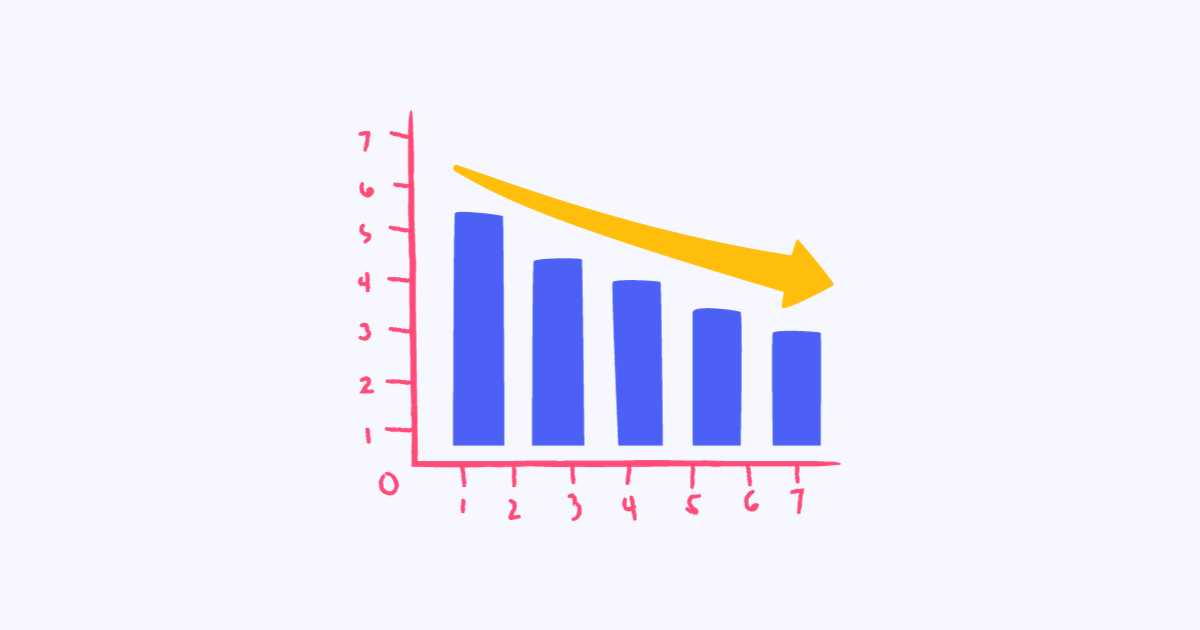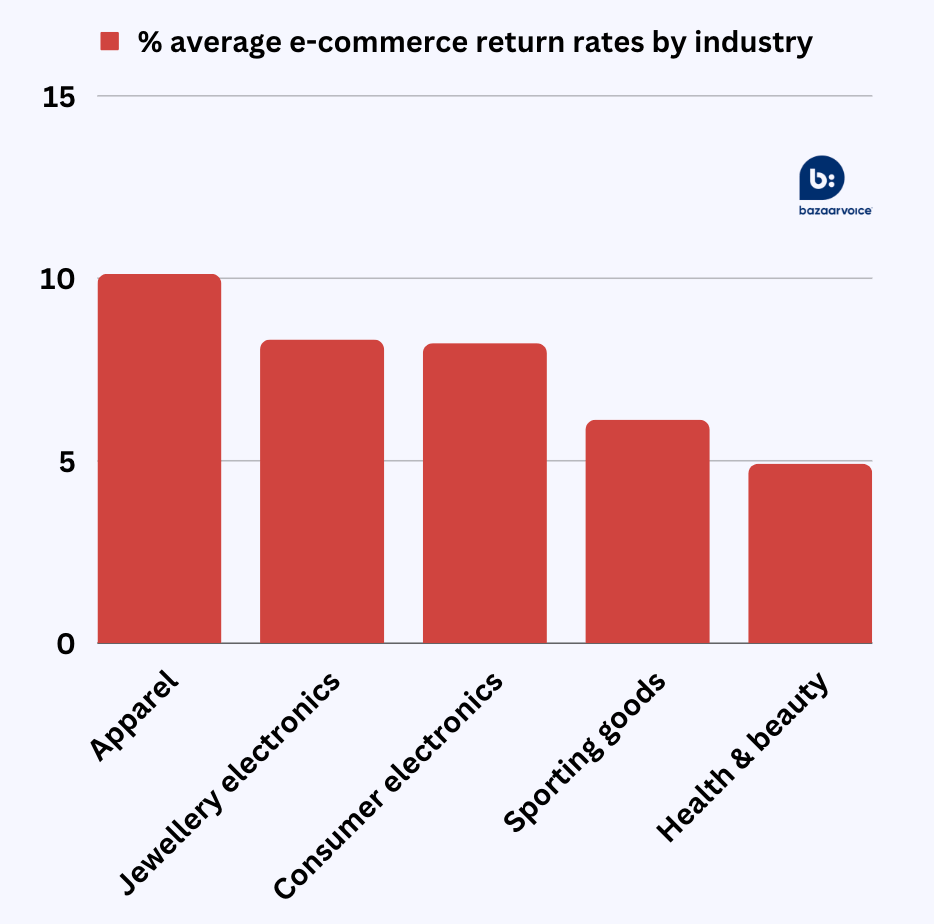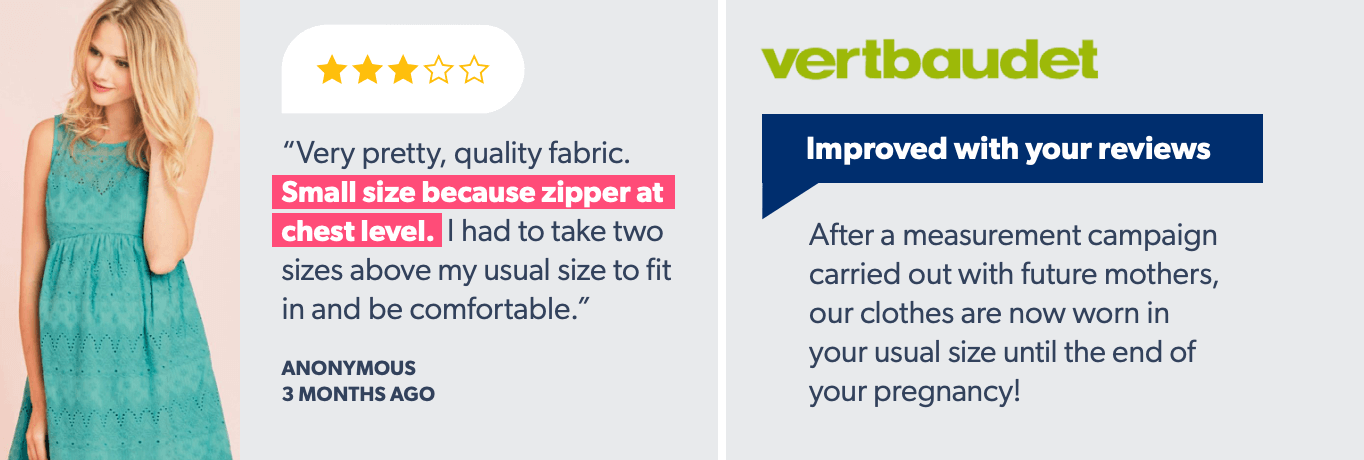
With more customers shopping online than ever before, e-commerce returns have been increasing. A recent survey from the National Retail Federation estimates that e-commerce returns account for over $400 billion in lost sales for U.S. retailers.
Higher e-commerce return rates are a problem for your business because returns reduce e-commerce conversion rates and decrease your profit margins. Every time a customer returns an item, you either need to resell it or mark it as a loss. Not to mention the cost of paying to have the item returned.
Plus, you run the risk of having an unhappy customer that may not choose to shop with you again. The customer already spent a lot of time opening several tabs from different stores trying to find the one product that would fit their needs, and they chose yours. Even if you offer free, easy returns, customers still have to initiate the e-commerce returns process, which can be a hassle.
The workaround? Reducing your e-commerce return rate, which can be easier said than done. Otherwise the average return rates in e-commerce, which sit at about 20-30%, would be a lot lower than they actually are. But that’s where user-generated content (UGC), like reviews and social media posts, comes in.
Chapters:
- What is e-commerce return rate?
- 7 ways to reduce e-commerce returns
- Make e-commerce returns a thing of the past with UGC
What is e-commerce return rate?
Your e-commerce return rate is the number of total products ordered from your e-commerce site that are returned back to you, either for a refund or store credit. It’s calculated as a percentage of number of e-commerce sales within a specific timeframe.
To calculate your e-commerce return rate, divide number of products returned by the number of products sold, and times the answer by 100.
Say you wanted to figure out your return rate for March 2023. During the month you sold 8,500 units, of which 900 were returned. It would be 900 divided by 8,500, then multiplied by 100 — giving you an average e-commerce return rate of 10.5%.
While it’s estimated that for every $1 billion in sales, the average retailer incurs $165 million in e-commerce returns, average return rates vary by industry.

Unsurprisingly, apparel is the highest. According to research, “item doesn’t fit fit” is one of the main reasons for e-commerce returns. The same research states the other top reasons are:
- Item doesn’t match description
- Don’t like the item(s)
- Ordered multiple items/sizes
The trick here is to tap into the voice of your customer and let them do the selling for you through authentic UGC. Seeing products being used in the real world on real people ensures they better match product descriptions and customers have a better idea of whether they like an item or not. Making a more confident e-commerce purchase means less chance of a product being returned.
7 ways to reduce e-commerce returns
The bad news is that returns will always happen within e-commerce, and you can’t get rid of them entirely. But don’t despair, there’s good news too. There’s several ways to reduce your e-commerce return rate. Here’s the top seven.
1. Collect ratings and reviews
Bazaarvoice research found that 88% of shoppers use reviews to discover and evaluate products. People rely on user-generated content like reviews to evaluate if a product/service is a good fit for them. Learning about their peers’ experiences with the product builds trust and inspires more confident purchasing decisions. And more confident purchases lead to fewer returns.
So how do you get more reviews for your products to inspire those future shoppers?
- Ask past customers to leave them via review request emails or a customer satisfaction survey
- Run a sampling campaign and send a free product sample in exchange for an honest review
- Incentivize customers to leave feedback with a discount or voucher
According to a BrightLocal survey, 35% of consumers have left a review at least half of the times they were prompted to do so by a business. The moral of the story? It doesn’t hurt to ask.
We have found that consumers trust the opinions of other consumers more than advertising claims
For example, in a bid to reduce return rates, clothing giant GANT implemented a UGC program to collect more customer reviews that contained product size and fit information. “We have found that consumers trust the opinions of other consumers more than advertising claims,” revealed GANT’s Head of E-Commerce. As a result, the brand was able to achieve a 5% reduction in return rates.
2. Show how your products look in real life with visual UGC
Visual UGC sourced from social media can increase conversions by 150% and average order value by 15%. Visual UGC can be particularly impactful for apparel, home, and beauty brands because these are also the categories that have the highest e-commerce return rates. Using UGC here gets shoppers closer to seeing what these product look like in real life situations.
For example, Maybelline includes its fantastic brand imagery on its Lash Sensational Sky High mascara product detail page, but it also has galleries of visual UGC from real customers so shoppers can see how the product looks on a regular person (not a model).
The galleries on Maybelline’s product pages are also shoppable, with tagged products in each image so customers can complete the look with other Maybelline products if they choose to.
3. Provide comprehensive size guides
Narvar found that about 48% of customers buy multiple sizes of the same apparel item to figure out what fits at home, and then they return the rest of the order. If you’re an apparel brand looking to help your customers cut down on this, look at the sizing information on your product pages. What are you telling the customer about how the product fits?
Every person’s body is different, so offering information about how the product fits on users with similar body types is critical.
For example, when a shopper clicks on “Size & Fit” on one of clothing brand American Eagle’s product pages, they’ll see a scale that shows how an item fits based on what other reviewers have said.

Then, if the user scrolls down to the reviews, they’ll see more information about how all reviewers found the item’s fit. They’ll also be able to filter product reviews by size, height, and weight, so they can discover what reviewers most similar to their body type have said about the clothes.
Another option is to harness the augmented reality marketing trend. AR is coming in to save the day and reduce global e-commerce returns. Well-known brands like ASOS and Sephora use AR tools to show how clothing looks on different body types, or how a certain shade of lipstick would look on you. All without ever having to leave the house.
4. Put the “detail” in “product detail page”
When’s the last time you reviewed your product detail pages (PDPs)? Take a look at them with your team and ask yourself, “If I knew nothing about the product, what does this page tell me?”
To reduce returns, you have to give customers a rich PDP with as much information about what they’re buying as possible. Selling clothes? Don’t just tell them what fabric the T-shirt is made of. Tell them what it feels like and what they can wear it with.
You should also incorporate UGC into the “detail” portion of your PDPs. Reviews don’t have to live at the bottom of the page. Beauty brand Lush leverages awesome testimonials from customers and displays them higher up on product pages.
Find reviews that tell other shoppers exactly how the product will make them feel. This is especially beneficial for beauty, apparel, or home brands because shoppers can’t see and feel the products in person.
5. Answer customer questions
So you’ve provided great sizing guides, added more detail to product pages, and have collected UGC in the form of reviews and images from customers. But what if shoppers still have questions about your product? You don’t want them leaving your site to get the answer, which is why many retailers are adding question and answer modules to their online stores.
Our own research found that brands and retailers who respond to questions onsite see a 98% average conversion lift.
It’s pretty simple — if a shopper is unsure about a product, they likely won’t buy it. But they’ll ask the seller a question about it. Ignoring the question means the shopper either won’t purchase it, or if they do it may not be right for them. Thus, will be returned. If you do answer the question, the uncertainty is cleared up and it’s more likely to be a successful purchase, reducing your e-commerce returns rate.
Plus, you can also use questions and answers to improve product pages. If you notice the same questions coming up repeatedly, consider incorporating information that answers that question into the product description to give customers the answers they need even faster.
6. Respond to customer reviews
Collecting reviews isn’t enough. Your company must take an active role in review management in order to provide as much information about products to potential customers as possible before they make a purchase. This means responding to reviews, both positive and negative. Our own research tells us that 87% of customers expect brands to respond to negative reviews, and 72% expect responses to positive reviews.
For negative reviews, offer support and a solution to make it right with the customer. This will prove to the customer (and browsing shoppers) that you listen to feedback and can be trusted as a brand. Just don’t ignore them. 35% of customers say they wouldn’t keep purchasing from a brand that ignored their complaints.
For positive reviews, thank the customer first and then find a detail from their review that you can comment on to show that you read the review and take what customers say to heart.
7. Use insights to improve products
Is there a certain product on your site that just keeps getting returned? If you have a good review collection strategy, your brand can leverage customer insights found in this UGC to figure out what customers don’t like about the product so you can improve it and reduce future returns.
Take the fashion brand Vertbaudet as an example. The brand noticed consistent customer feedback through product reviews that one of their maternity dresses was too small.
Vertbaudet responded by improving the measurements of the maternity dress and fixed the cut, leading to a reduction in returns to their e-commerce site and an increase in profit.
Make e-commerce returns a thing of the past with UGC
UGC is a powerful tool when it comes to reducing your return rates, both e-commerce and in-store. By providing information from other customers, you’ll help shoppers buy the right product for their needs the first time, which will improve customer satisfaction and your bottom line.
Not only that, but brands that utilize UGC in e-commerce can see a 22% increase in average order value and a 150% increase in conversion rates. Learn the different ways you can use UGC for e-commerce, from reducing return rates to boosting conversion rates, in this comprehensive guide to UGC for e-commerce.





